Can Paint Go Down the Drain? What You Should Know!
-

- Last updated:
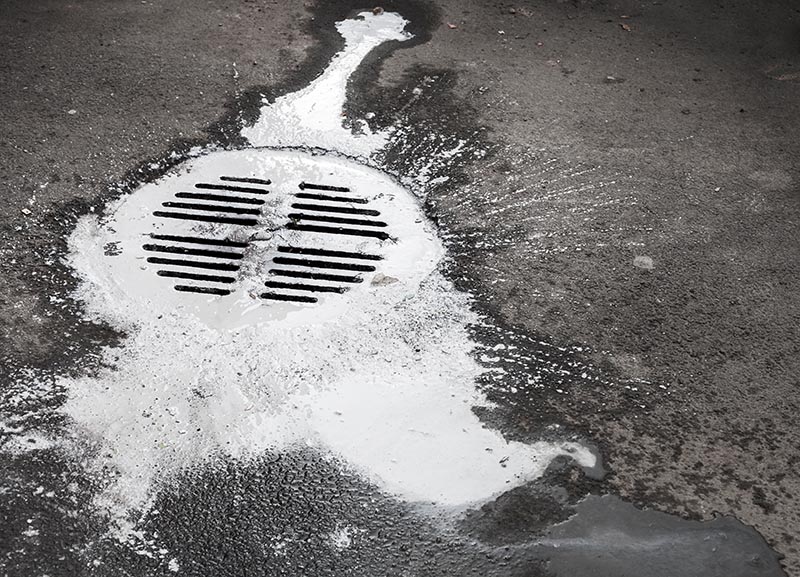
It is always a perfect idea to do your own paint projects to save money and ensure your project has been done precisely the way you want. Once you finish your paint job, disposal of the remaining paint becomes a significant issue. Many people may contemplate pouring it down the drain, but paint should never be allowed to go down the drain.
So what should you do with leftover paint? Keep reading this article for deeper insight into why you should never pour paint down the drain. We will also take you through the best practices for disposing leftover paint.
Why It Is Not Recommended to Pour Paint Down the Drain
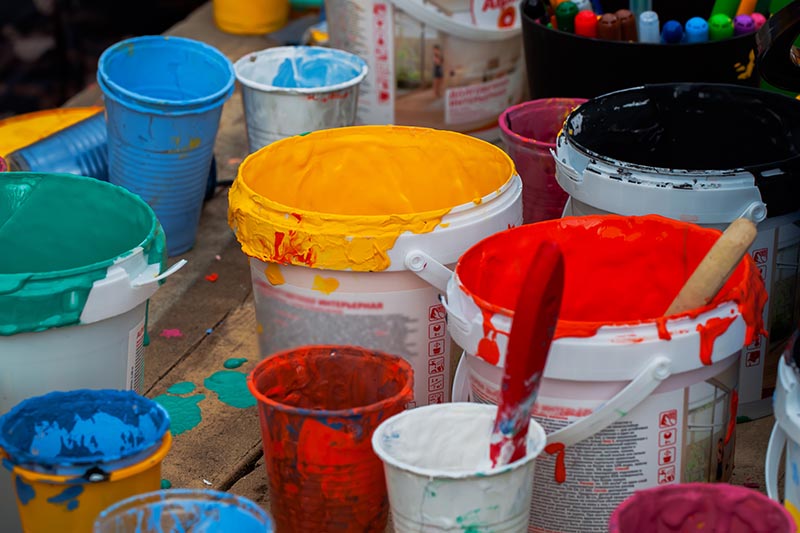
Clogging
Even though the paint is liquid, the ingredients used in making it contribute significantly towards forming clogs when pouring down the drain; the paint is designed as a binder that binds on surfaces to protect them against moisture. Once it has attached itself to a surface, it is designed to last long until scraped or melted off.
Therefore, as the paint flows down the drain, it binds itself on the pipe, hence the formation of clogs obstructing efficient waste flow from the house to the septic tank.
Water Contamination
Apart from forming clogs and possibly igniting, when the paint is flushed down the drain, the chemicals used to make it may leach into your water system, contaminating the water you use in your household.
Harmful Fumes
The acrylic and oil in the paint also produce very harmful fumes that can cause issues, especially in a house with an improper ventilation system. The volatile organic compounds in the paint may cause symptoms like fatigue, dizziness, headache, and nausea.
How to Dispose of Oil-Based Paint
The chemicals used to make oil-based paints make it a bit tricky to dispose of the paint. In some countries, it is illegal to throw them in the trash. However, most of them have instructions on the cans on how to go about it. However, you may as well do the following:
- Take the remaining oil-based paint to the nearest hazardous waste facility. That way, you will not be burdened with the responsibility of dealing with it in the best way possible without causing harm to yourself and the surroundings.
- Identify a take-back program for recycling near you. Most of them will accept paint cans, old paints and coatings for recycling.
- Use a paint thinner as instructed on the can to get rid of the remaining paint, then place the can in the garbage or take the can to the nearest hazardous waste depot.
- If the remaining paint is still fresh, you may donate it to your neighbor, a church or anybody that needs it.

How to Dispose of Water-Based or Latex Paint
Latex paint is not as stubborn as oil-based paint; you can quickly dispose of it. It can also be thrown into the trash only after following the instructions below:
- Remove the lid and allow the little remaining paint to harden before throwing the can in the trash.
- You may take the can to the nearest recycling center if they accept old paint cans.
However, if you still have a lot of paint remaining, you may consider doing the following:
- Donate the paint to an organization or anybody who may need it.
- Check whether the nearest hardware store has a take-back program.
- You can still seal it and store it in a cool, dry place until you find some use for it.
How to Remove Paint from Drain Pipes
Since pouring paint down the drain causes damage and clogs the drain, is there a possible solution for someone who has already poured the paint into the drain pipes and is currently facing the mentioned issue?
There are four main methods to eliminate paint from the drains.
1. Make Use of Paint Thinners
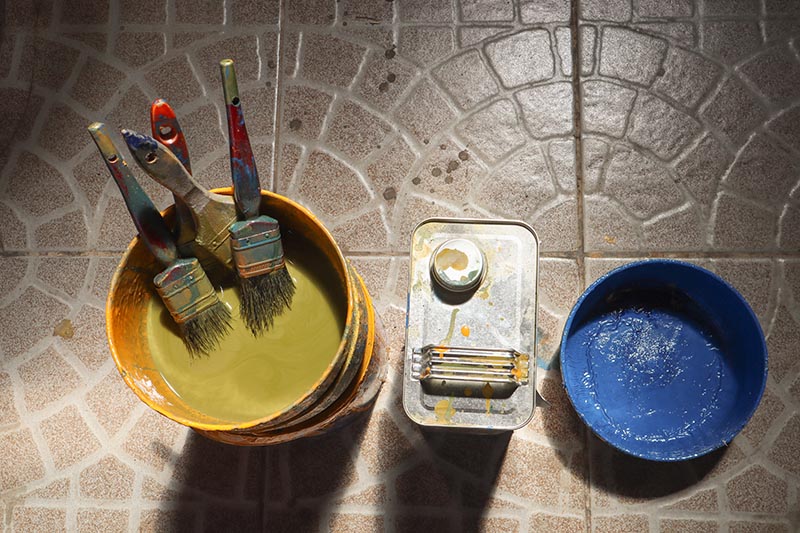
The amount of paint thinner to pour down the drain to dissolve the paint will depend on the size of clogs the paint has formed. The larger the clogs, the more paint thinner will be required.
A flexible camera sewer locator is required to go down the drain to survey the situation and know how much damage needs to be repaired. If you do not have this tool, hire a professional plumbing company. There would be no need for a camera sewer locator if only a small amount of paint went down the drain.
It is also advisable to consider issues like the environmental municipality regulations that govern your area and whether your pipes are made of strong enough material to handle the process. Pour the paint thinner down the drain and give it time to dissolve the clogs.
2. Scrape the Paint Off
If possible, physically scrape off the paint if you can access it, especially if it is on the drain pan. After scraping it off, wash the remaining with some paint thinner or warm water.
However, if the paint has already gotten into the drain pipe, you will need to disconnect the pipes physically. Some pipes can easily be disconnected by hand if you are dealing with plastic pipes. Other pipes need pliers or a wrench to disconnect and remove the clogged paint.
If it is still impossible to physically scrape off paint clogs even after disconnecting the P-trap, you may need a drain snake to access the clogs and get them out. At this point, you may need to hire a plumber.
3. Keep Water Running Down the Drain
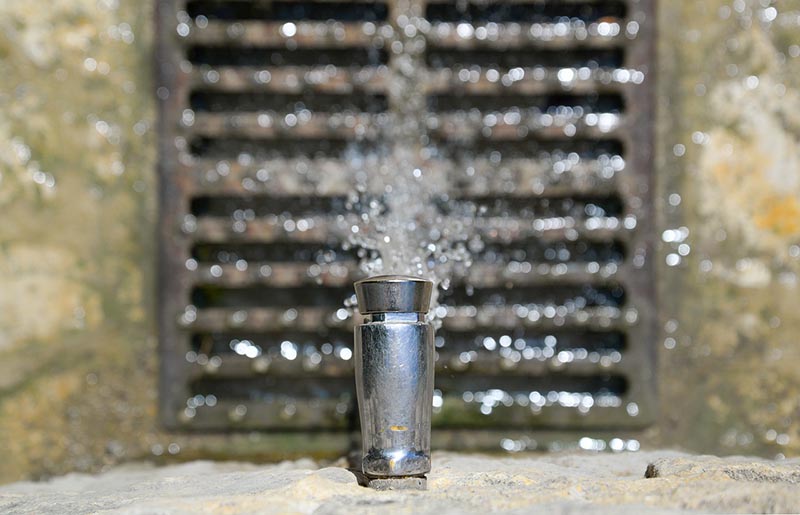
Keep the water running the drain if the paint that went down there is water-based, and a little amount that is still fresh. Water will not be so helpful when it comes to oil-based paint.
4. Use Vinegar
In the absence of a paint thinner, you may consider using vinegar. Vinegar is often used when cleaning paintbrushes; it is readily available and not expensive. However, it may not always work for all types of paint clogs. It will depend on the amount of paint stuck in the drain pipes.
However, if you want to try it, microwave a cup of vinegar at high power for 60 seconds and pour it down the drain. Allow it a few minutes to dissolve the pain before running some water.
Can I Wash Paint Brushes in the Sink?
As established, it is not advisable to pour paint down the drain. The same case applies to washing paintbrushes in the sink. Not just paint brushes but anything used during the painting process, including the paint rollers, trays, and buckets.
Washing these items in the sink means letting paint remnants down the drain. So then, how do you get rid of the remaining paint on the brushes? How you clean your paintbrush depends on whether the paint used is water-based or oil-based.
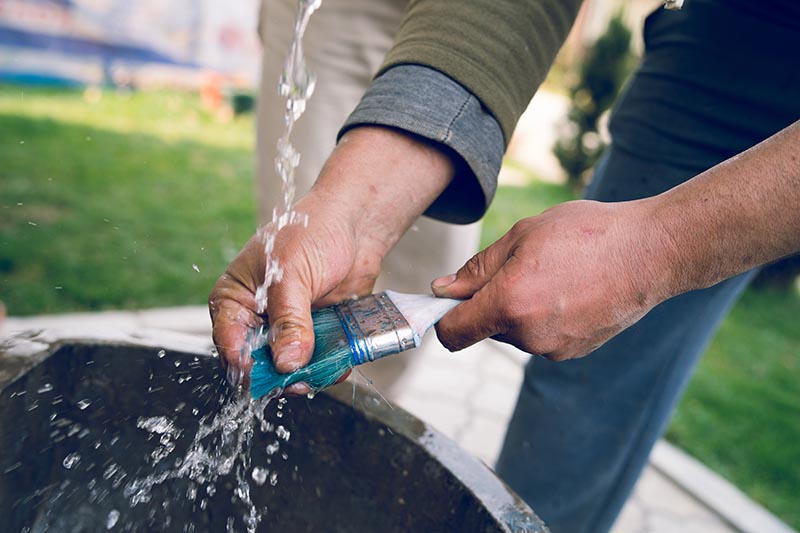
- For oil-based paint, immerse the brush in the suggested solvent on the paint can until there is no more paint. Wash the brush in a pail of clean water to rinse, and wrap it in heavy paper to ensure it retains its shape.
- Suppose the paint on the brush is water-based; wipe off excess paint on the paint can or on a rag you no longer use—deep the brush in a pail of water for a while. Repeat the process with clean water if the paint is not removed completely. Water-based paint can easily be washed off using water; do not make the mistake of washing it down the drain or washing the brush in the sink.
- The paint may not be oily, but it contains harsh chemicals and toxic fumes that can be harmful when inhaled or chemicals that can cause health hazards when leached into the water system. When done, also wrap the brush in heavy paper to ensure it retains its shape.
- After washing paint brushes in a pail of clean water, set the pail aside. If it is sunny, you may let the water evaporate, and the paint particles settle down at the bottom of the pail. Transfer the hardened paint particles to the trash with the rest of the garbage.
- Alternatively, set the bucket aside for the paint particles to settle at the bottom of the pail. Carefully tip over the pail so that the water at the top pours. Ensure the paint water is poured on a flat grassy surface. The water should not be poured close to the sewer and storm drains. Once the water has been eliminated, allow the residue to settle and dry before you transfer it into the trash.
Conclusion
Paint can not go down the drain since it will harden as it flows, forming clogs in the pipes. The paint also produces toxic fumes that can cause health issues like fatigue, dizziness, headache, and nausea. If you accidentally pour paint down the drain, consider pouring a paint thinner, scraping the paint off, keeping the water running down the drain, and using vinegar.
Otherwise, strictly keep off any type of paint—whether water-based or oil-based—from your drainage system.
Featured Image Credit: Evannovostro, Shutterstock
Contents

